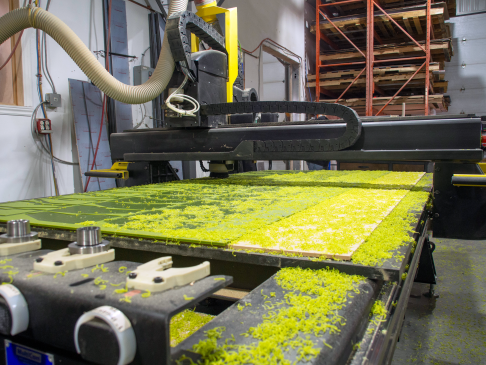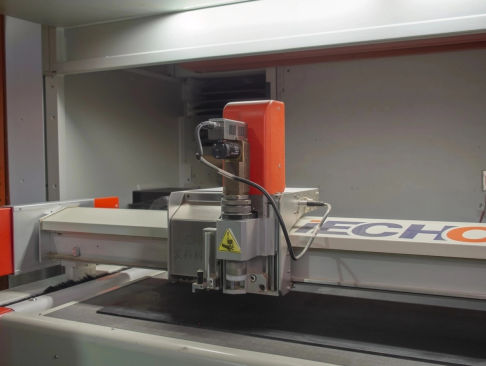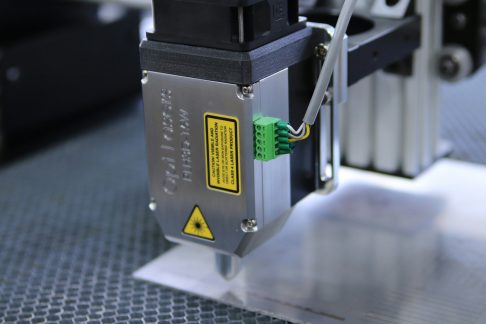Machining subcontractor for over 30 years!

Over 12 areas of expertise under one roof. We can help you achieve your production goals.
Top 5 Most Versatile Plastics
In a world where material innovation becomes a strategic issue for businesses, versatile plastics hold a prominent place in many industrial sectors. Their adaptability, specific properties, and cost-effectiveness make them materials of choice to meet current technological challenges. Let's discover together the five most versatile plastics on the market and how they can transform your industrial approach.
The Current Challenges of Versatile Plastic Materials
An Increasing Demand for Performance and Durability
The contemporary industrial context imposes increasingly demanding constraints on the materials used. Companies are seeking plastics capable of withstanding extreme conditions while maintaining their structural properties intact. This pursuit of performance is now accompanied by a growing concern for environmental sustainability.
The Complex Balance between Technical Properties and Environmental Impact
The versatility of a plastic is no longer measured solely by its technical characteristics but also by its ability to integrate into a circular economy. Manufacturers must navigate between performance demands and ecological considerations, an equation that can sometimes be difficult to solve.
Adaptability as a Key Factor for Competitiveness
In a constantly evolving market, the ability of a material to adapt to different applications represents a major competitive advantage. Versatile plastics help reduce development and production costs while accelerating the market launch of new products.
The Top 5 Most Versatile Plastics on the Market
1. POM (Polyoxymethylene or Delrin)
POM stands out for its exceptional machinability and remarkable dimensional stability. Its high mechanical strength combined with excellent wear resistance makes it a preferred choice for precision components.
Key Strengths:
- Exceptional dimensional stability
- High mechanical strength
- Excellent wear resistance
- Good chemical resistance
- Ideal for parts requiring precise tolerances
POM is found in applications as diverse as water meters, security belt components, insulin pens, and electronic cigarettes. Its versatility makes it a benchmark material for industries that demand reliability and precision.
2. PEEK (Polyetheretherketone)
A true champion of high-performance plastics, PEEK offers a rare combination of mechanical, thermal, and chemical properties that place it at the top of polymer materials.
Key Strengths:
- Exceptional mechanical resistance
- High temperature tolerance (up to 260°C continuously)
- Remarkable chemical resistance
- Excellent dimensional stability
- Electrical insulation properties
PEEK naturally excels in the most demanding sectors such as aerospace and medical. Its high cost is generally offset by its exceptional longevity and performance in critical environments.
3. UHMW (Ultra-High Molecular Weight Polyethylene)
UHMW is distinguished by its unique combination of toughness and advanced tribological properties. Its low coefficient of friction makes it a prime material for applications involving moving surfaces.
Key Strengths:
- Exceptional toughness
- Superior abrasion resistance
- Low coefficient of friction
- Good impact resistance
- Self-lubricating properties
UHMW is found in food processing machinery, truck coatings, and marine parts. Its main limitation remains its susceptibility to creep and limited thermal resistance (beyond 100°C).
4. PC (Polycarbonate)
Polycarbonate offers crystal-clear transparency combined with impressive mechanical resistance, making it an essential material for many applications.
Key Strengths:
- Exceptional optical transparency
- Remarkable impact resistance
- Good dimensional stability
- Electrical insulation
- UV resistance (with additives)
PC is widely used in safety glazing, consumer electronics, medical equipment, and protective helmets. Its ability to be precisely molded makes it a preferred material for complex designs.
5. PA (Polyamide or Nylon)
Polyamides represent a family of extremely versatile polymers, offering an excellent balance between mechanical strength, lightness, and wear resistance.
Key Strengths:
- Excellent mechanical strength
- Good wear resistance
- Vibration absorption
- Hydrocarbon resistance
- Ease of processing
Polyamides are ubiquitous in the automotive industry, sporting equipment, household appliances, and industrial components. Their ability to be reinforced with fibers (glass, carbon) further broadens their range of applications.
Trends to Watch in the Field of Versatile Plastics
The rise of advanced composites: The future of versatile plastics relies on the development of composite materials that combine the properties of several polymers or incorporate specific reinforcements. These innovations allow performance to be tailored to each application.
Bio-inspiration as a Source of Innovation: Researchers are increasingly drawing inspiration from natural structures to develop new polymers with exceptional properties. This bio-inspired approach paves the way for materials that combine performance with environmental respect.
The Integration of Smart Features: The plastics of tomorrow will no longer be merely passive materials but will incorporate active functionalities such as self-repair, programmable conductivity, or the ability to change shape in response to external stimuli.
Practical Advice for Businesses
Adopt a Systemic Approach to Material Selection
To maximize the benefits of versatile plastics, adopt a multi-criteria evaluation methodology that takes into account the entire product lifecycle. This approach helps identify the material that offers the best compromise between technical performance, cost, and environmental impact.
Invest in Training and Expertise
Mastering versatile plastics requires specialized skills in materials engineering. Training your teams or collaborating with external experts can make all the difference in the optimal use of these materials.
Anticipate Regulatory Changes
Regulations concerning plastics are evolving rapidly. Prioritize materials that offer long-term compliance and prepare for future requirements regarding recyclability and environmental impact.
Test Under Real Conditions
The technical data provided by manufacturers never replace real-world testing. Invest in prototypes and experiments to validate the behavior of the materials in your specific application.
Conclusion: Towards a Strategic Use of Versatile Plastics
Versatile plastics represent much more than just construction materials; they are genuine drivers of innovation and competitiveness for companies that know how to harness their full potential. By understanding their unique properties and anticipating future trends, your organization can turn material constraints into innovation opportunities.
Take action today! Assess your current material needs and identify the applications where versatile plastics could add significant value. Explore the possibilities offered by POM, PEEK, UHMW, PC, and polyamides to develop products that are more efficient, more durable, and more competitive in your market.
By making versatile plastics a central element of your materials innovation strategy, you position your company at the forefront of its industry, ready to meet tomorrow’s technical and environmental challenges.
FAQ
What machining services do you offer?
See all services
What materials do you work with?
Plastics, foams, wood, and non-ferrous metals
I want to optimize my production costs
By working transparently and identifying mutually beneficial opportunities, we can build a growth-focused partnership and significantly reduce material and production costs.


